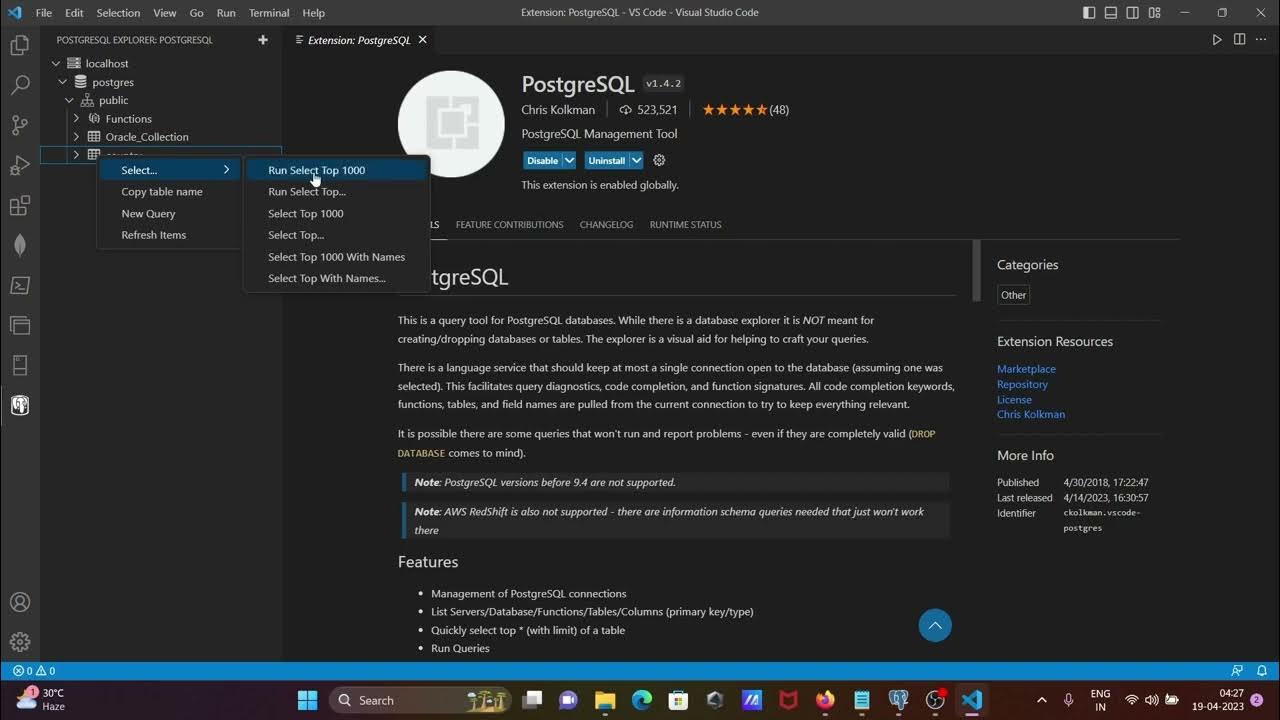Connect a PostgreSQL database to a Spring Boot Application Tutorial
Summary
TLDRThis tutorial video guides viewers on connecting a Spring Boot application with a PostgreSQL database. It covers creating a Maven project in Java 8, adding necessary dependencies, configuring properties for database connection, and using Spring Data JPA with Hibernate for ORM. The video demonstrates starting the application, creating a 'Person' entity, setting up a repository, and interacting with the database through a REST controller, showcasing CRUD operations.
Takeaways
- 😀 The video is a tutorial on connecting a Spring Boot application with a PostgreSQL database.
- 🔧 Viewers are directed to a previous video for instructions on installing PostgreSQL if needed.
- 🛠️ The tutorial uses Java 8 and Maven to create a Spring Boot project with web and JPA dependencies.
- 📚 Spring Data REST and Spring Boot Starter Data JPA are utilized for the project setup.
- 🔄 The video demonstrates the process of generating a Spring Boot project and importing it into IntelliJ.
- 🚫 The initial attempt to start the application fails due to missing data source URL details.
- 🌐 The data source URL and database credentials are retrieved from the PostgreSQL admin interface.
- 🔑 The tutorial explains how to configure the application properties for database connectivity.
- 🏗️ Hibernate is used internally by Spring Boot for JPA implementation, which requires setting the correct dialect.
- 📝 The video covers creating a 'Person' entity with ID and name fields, and setting up the corresponding JPA entity.
- 🔗 A repository interface is created extending JpaRepository to handle database operations for the 'Person' entity.
- 📡 A REST controller is set up to add and retrieve 'Person' data from the database using POST and GET mappings.
Q & A
What is the main topic of the video?
-The video is about connecting a Spring Boot application with a PostgreSQL database.
What programming language is used in the video?
-Java is the programming language used in the video.
What version of Java is mentioned in the video?
-Java 8 is mentioned in the video.
What is the purpose of Spring Initializer in the video?
-Spring Initializer is used to create a Maven project with specified dependencies for the Spring Boot application.
What dependencies are mentioned for the Spring Boot application?
-Dependencies mentioned include web, Spring Data JPA, and PostgreSQL driver.
Why is the application failing to start initially?
-The application fails to start initially because it cannot find the data source URL.
What property needs to be added to the application.properties file to fix the startup issue?
-The 'spring.datasource.url' property needs to be added with the correct PostgreSQL database URL.
What does JPA stand for and what is its role in the video?
-JPA stands for Java Persistence API, and it is used for managing relational data in the application.
What is the purpose of the 'spring.jpa.hibernate.ddl-auto' property in the application.properties file?
-The 'spring.jpa.hibernate.ddl-auto' property is used to specify whether the database schema should be created or updated automatically when the application starts.
What is the entity created in the video?
-A 'Person' entity is created in the video, with 'id' and 'name' as its fields.
What is the role of the 'PersonRepository' interface in the video?
-The 'PersonRepository' interface is used to define the data access layer for the 'Person' entity, extending the functionality provided by Spring Data JPA.
How is data added to the PostgreSQL database in the video?
-Data is added to the PostgreSQL database through a REST controller that handles POST requests to add new 'Person' entities.
How can the created 'Person' entity be retrieved from the database?
-The created 'Person' entity can be retrieved by accessing the appropriate REST endpoint, such as 'localhost:8080/person/{id}', where '{id}' is the ID of the person.
Outlines

This section is available to paid users only. Please upgrade to access this part.
Upgrade NowMindmap

This section is available to paid users only. Please upgrade to access this part.
Upgrade NowKeywords

This section is available to paid users only. Please upgrade to access this part.
Upgrade NowHighlights

This section is available to paid users only. Please upgrade to access this part.
Upgrade NowTranscripts

This section is available to paid users only. Please upgrade to access this part.
Upgrade Now5.0 / 5 (0 votes)





